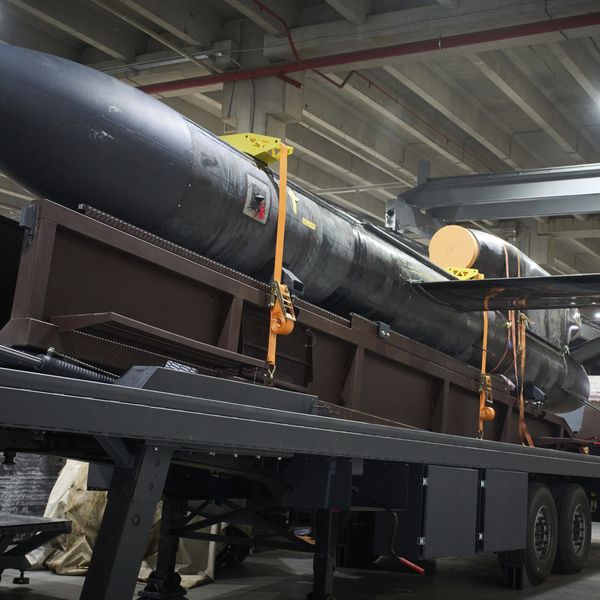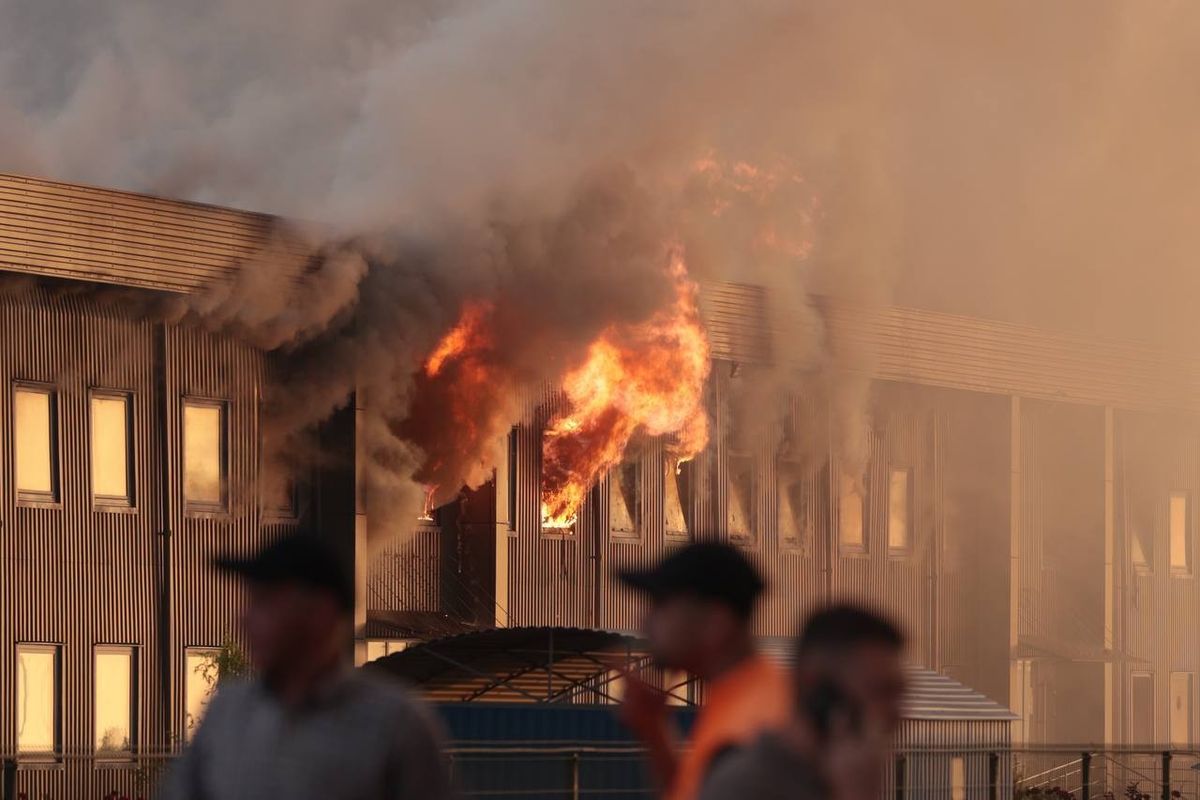OPINION — The skies over Ukraine and the Middle East have shown us a chilling new type of warfare. Drones, once toys or tools, have morphed into weapons, wreaking havoc on both military targets and civilian life. As the world watches these grim realities unfold overseas, we worry - are we facing similar drone-driven threats closer to home?
In the bustling heart of American cities and the quiet hum of rural infrastructure, the seeds of that future are already being sown. The commercial drone industry is just getting started in earnest, delivering packages, surveying crops, and capturing stunning aerial shots. This technological marvel, however, harbors a lurking shadow: the potential for malicious misuse.
Consider this: the same drone buzzing over your neighbor's backyard could, in the wrong hands, become a silent bomber, targeting power grids, communication networks, or even crowded city centers. Hackers could hijack commercially available drones, transforming them into remote-controlled weapons of terror. Non-state actors, from criminals to drug cartels to violent extremist organizations (i.e., Hamas, ISIS, Al Qaeda, etc.) and hostile nations, could exploit gaps in regulations and surveillance, weaponizing readily available drones with devastating consequences.
The parallels to war zones are stark. In Ukraine, drones have rained fire on critical infrastructure, plunging cities into darkness and disrupting vital communication lines. Terrorizing citizens and attacking the psyche of an entire population, drones have been used to attack nursing homes and schools.
In the Middle East, both commercial targets and nation state critical infrastructure has been attacked. Tragically, drone assaults on U.S. and allied forces has been on the rise, and now U.S. forces in Jordan were killed and injured by Iranian supported terrorist groups.
Reports also clearly highlight the regular use by of commercially available, inexpensive unmanned aerial systems being used to harass and attempt to maim military vessels in key economic corridors by the Iranian backed Houthis.
Find out how private sector businesses are investing and innovating in Ukraine at The Cipher Brief’s Kyiv Economic and Security Forum. Find out more at TCBKyivForum.com
These real-world examples serve as a grim warning for what could be our future if America doesn’t act promptly. Most recently, on January 28th, the NFL’s conference championship game between the Baltimore Ravens and the Kansas City Chiefs was halted because of an unidentified drone’s proximity to the stadium. Upon investigation, there appear to have been upwards of five unauthorized drones in the vicinity of the stadium and it was a repeat of events during a game in the same stadium in Baltimore on November 16, 2023.
This highlights that just as we've witnessed in war zones, American vulnerabilities are vast: interdependent infrastructure networks, densely packed urban centers, and a growing pool of commercially available drones all create a perfect storm for potential malicious actors.
However, while the threat is real, it's not insurmountable. We must learn from the lessons of the battlefield and proactively mitigate the growing drone threat with a cost-effective technology to enable a large-scale roll-out of capability that is commercially available today.
Looking for a way to get ahead of the week in cyber and tech? Sign up for the Cyber Initiatives Group Sunday newsletter to quickly get up to speed on the biggest cyber and tech headlines and be ready for the week ahead. Sign up today.
Technological solutions are crucial and employing commercially available technology proven in conflict to defend against these threats is imperative. Through their employment, we will learn advancements in counter-drone systems, detection technologies, and drone identification protocols. Imagine sophisticated radar systems scanning our skies, not eavesdropping on phone calls, but quietly keeping watch for suspicious drone activity. These systems can focus on identifying the drone itself, without gathering personal information on individuals.
Robust policy and regulations are vital, but we must not let the lack of them or dated concepts freeze what must be an urgent roll-out of the best commercially available technology today.
Yes, the use of drones by law enforcement deserves careful consideration as most drones are designed for commercial and entertainment use but we must not wait for a tragedy to begin employing them to protect life and critical infrastructure. Think of police use of drones like SWAT teams in the sky, to be called upon only when necessary to neutralize critical threats, not patrolling neighborhoods or constantly buzzing overhead.
This is a national to local challenge that must be worked in the real-world, in real-time, in a rapid field to learn manner with local municipalities helping to inform successes and challenges - while likely with every deployment - an unknown and unmanaged threat is already present in our skies.
It's not just for the President anymore. Cipher Brief Subscriber+Members have access to their own Open Source Daily Brief, keeping you up to date on global events impacting national security. It pays to be a Subscriber+Member.
The future of drones need not be one of destruction and terror. By acknowledging the vulnerabilities, exploring technology and policy solutions, and fostering international cooperation, we can ensure a future where drones soar not as harbingers of doom, but as tools for progress and innovation. This is not a challenge for tomorrow; it is a fight requiring attention today for the security of our skies, the safety of our cities, and the very fabric of our national well-being. The time to act is now, before the echoes of war on distant shores become the sound of drones of terror overhead.
Neutralizing drones of ill intent with minimal collateral damage is of paramount importance.
Imagine drone countermeasures that using nets to safely capture or disable aerial threats without causing explosions or falling wreckage. That would ensure the safety of civilians and critical infrastructure while providing ample opportunity for forensic analysis to determine the culprit who launched the intended offense.
By embracing these responsible approaches, America can navigate the future of drones with confidence, safeguarding our skies while unlocking the technology's immense potential for good. Government leaders at the National, State, Local and Tribal levels must work urgently together to ensure that the skies above remain a symbol of freedom and invention, not a canvas for fear.
The Cipher Brief is committed to publishing a range of perspectives on national security issues submitted by deeply experienced national security professionals.
Opinions expressed are those of the author and do not represent the views or opinions of The Cipher Brief.
Have a perspective to share based on your experience in the national security field? Send it to Editor@thecipherbrief.com for publication consideration.
Read more expert-driven national security insights, perspective and analysis in The Cipher Brief













